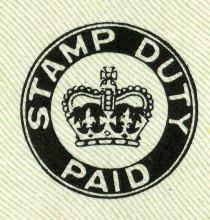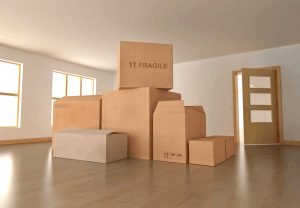 When you buy a house or flat that’s going to be your main home, you will pay stamp duty on everything above £125,000. If it’s a buy-to-let or second home, you pay stamp duty on any property costing more than £40,000.
When you buy a house or flat that’s going to be your main home, you will pay stamp duty on everything above £125,000. If it’s a buy-to-let or second home, you pay stamp duty on any property costing more than £40,000.
What is Stamp Duty?
In England, Northern Ireland and Wales you’re liable to pay Stamp Duty when you buy a residential property, or a piece of land, that costs more than £125,000 (£40,000 for second homes).
This tax applies to both freehold and leasehold properties – whether you’re buying outright or with a mortgage.
In Scotland, when you buy a property or land you will pay a Land and Buildings Transaction Tax instead of Stamp Duty.
How much is Stamp Duty?
When you buy a property you’re planning to live in, you won’t pay any Stamp Duty on the first £125,000. You’ll then pay 2% on the portion up to £250,000 and 5% on the portion up to £925,000. Between that point and £1.5m, it’s 10% – then 12% on anything over £1.5m.
There are several rate bands for Stamp Duty.
For example, if you buy a house for £275,000, the Stamp Duty Land Tax (SDLT) you owe is calculated as follows:
0% on the first £125,000 = £0
2% on the next £125,000 = £2,500
5% on the final £25,000 = £1,250
Total SDLT = £3,750
Stamp duty for residential leasehold properties are charged differently.
Stamp Duty on second homes:
Buyers of additional residential properties, such as second homes and buy-to-let properties, will have to pay an extra 3% in Stamp Duty on top of current rates for each band.
This increased rate applies to properties bought for £40,000 or more.
It doesn’t apply to caravans, mobile homes or houseboats.
If you buy a new main residence but there is a delay in selling your previous main property, you’ll have to pay the higher Stamp Duty rates as you’ll now own two properties.
When is Stamp Duty not payable?
You’ll automatically avoid Stamp Duty if you buy a property below £125,000.
But for many homebuyers this isn’t possible.
There are other circumstances in which Stamp Duty is either not payable or can be reduced:
Slightly over rate band. If the price is only just within a higher band, ask the seller or estate agent if they would accept a slightly lower price.
Transfer of property in separation or divorce. If you’re divorcing or separating from your spouse or partner, there’s no Stamp Duty to pay if you transfer a proportion of your home value to them.
Transfer of deeds. If you transfer the deeds of your home to someone else either as a gift or in your will they won’t have to pay Stamp Duty on the market value of the property.


 Being a first-time buyer usually means forking out rent, saving for a deposit and playing catch-up with ever-rising house prices all at the same time!
Being a first-time buyer usually means forking out rent, saving for a deposit and playing catch-up with ever-rising house prices all at the same time! 